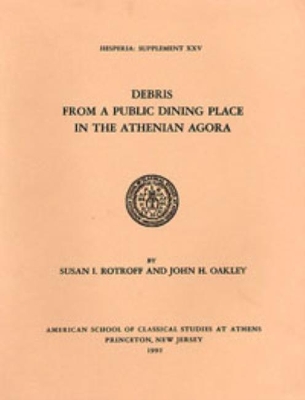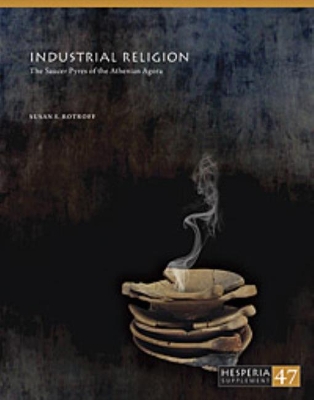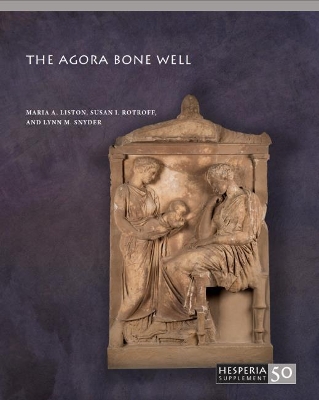Hesperia Supplement
3 primary works
Book 25
Debris from a Public Dining Place in the Athenian Agora
by Susan I. Rotroff and John H. Oakley
Published 1 December 1992
In 1972 a large deposit of pottery and other finds from the mid-5th century B.C. were found in a pit just west of the Royal Stoa in the Athenian Agora. It contained many fragments of figured pottery, more than half of which were large drinking vessels. Twenty-one fragments were inscribed with a graffito known to be a mark of public ownership. The authors conclude that the pottery is refuse from one of the public dining facilities that served the magistrates of Classical Athens. The volume examines the archaeological context and chronology of the deposit and gives a detailed analysis of all the finds. A complete catalogue arranges the finds by type and in chronological order.
Book 47
This study focuses on the "saucer pyres," a series of 70 deposits excavated in the residential and industrial areas bordering the Athenian Agora. Each consisted of a shallow pit, its floor sometimes marked by heavy burning, with a votive deposit of pottery and fragments of burnt bone, ash, and charcoal. Most of the pots were miniatures (including the eponymous saucers) but a few larger vessels were found, along with offerings associated with funerary cult. The deposits represent a largely Athenian phenomenon, with few parallels elsewhere. When first found in the 1930s, the deposits were interpreted as baby burials. Recent zooarchaeological analysis of the bones, however, reveals that they are the remains of sheep and goats, and that the deposits were sacrificial rather than funerary. The present study investigates the nature of those sacrifices, taking into account the contents of the pyres, their spatial distribution, and their relationship to buildings around the Agora and elsewhere. In light of a strong correlation between pyres and industrial activity, the author argues that the pyres document workplace rituals designed to protect artisans and their enterprises.
Book 50
The Agora Bone Well
by Maria A. Liston, Susan I. Rotroff, and Lynn M. Snyder
Published 30 November 2018
Even though Dorothy Thompson excavated the Agora Bone Well in 1938, the well and its remarkable finds have never been fully studied until now. Located outside the northwest corner of the Athenian Agora and dating to the second quarter of the 2nd century B.C., the well contained the remains of roughly 460 newborn infants, as well as a few older individuals. Also found in the well were the bones of over 150 dogs and an assortment of other animals, plus various artifacts, including an intriguing herm (treated here by Andrew Stewart) and an ivory chape. In addition to a thorough examination of the contents of the well, the authors provide a thoughtful analysis of the neighborhood in which the well was located and carefully compare the deposit with similar accumulations found elsewhere in the Mediterranean. The product of close cooperation between archaeological, palaeoanthropological, and faunal scholars, this interdisciplinary work will be of interest to a large audience across a variety of fields.


